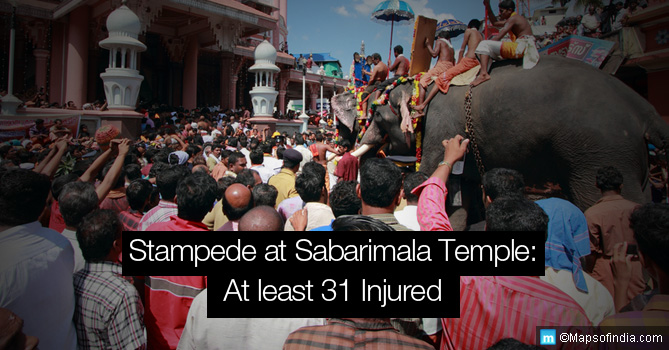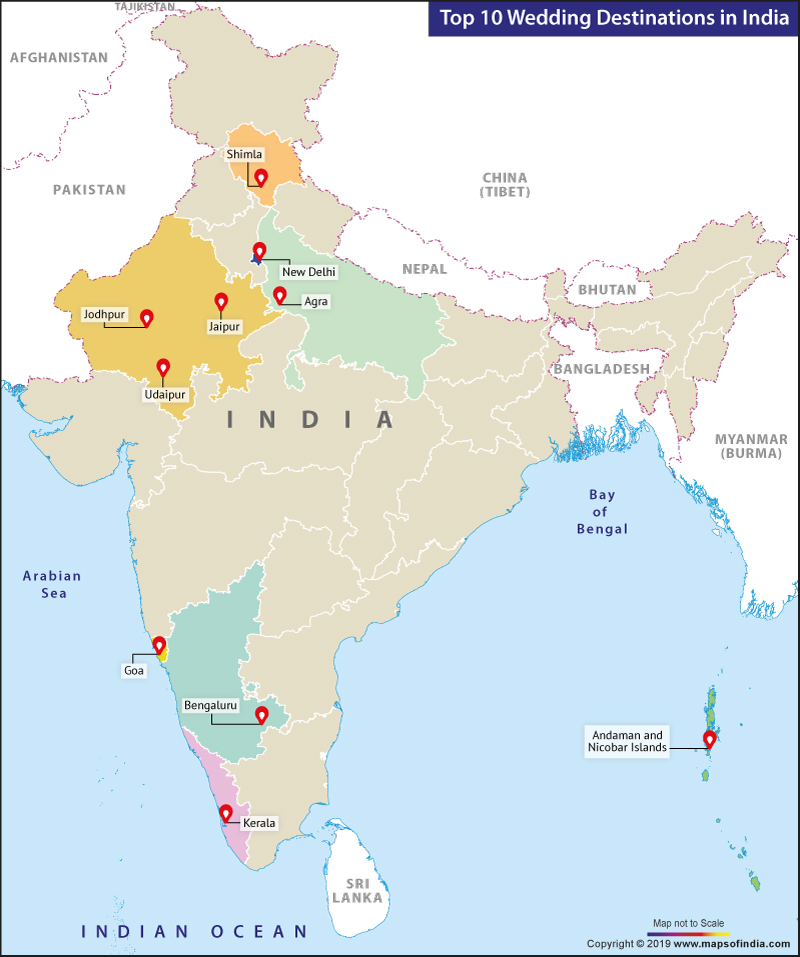Each year in December, hundreds of thousands of South Indian men from various parts of the world prepare to undertake what can only be described as one of the most arduous of fasts and an equally gruelling pilgrimage – the annual visit to Sabarimala. Each year, over 50 million devotees visit this shrine that traces its antiquity to the 12th century AD. Dedicated to Ayyappa, an incarnation of Dharma Sastha, the temple is open on only a few days each year. The heaviest footfall here is seen during the Mandala Puja days (approximately mid-November to late December), the Makaravilakku (around 14 January) and on the first five days of each month in the Malayalam calendar.
Sabarimala Attracts Huge Crowds
Pilgrims pour in from all parts of the world. South Indian Hindu men consider it their spiritual goal to make it to the mountain shrine of Sabarimala at least once in a lifetime. In fact, it is a tradition often passed down from father to son. Sabarimala is a common unifier – no matter what the social, political or ideological differences, the chant of “Samiye Saranam Ayyappa” brings together pilgrims from Kerala, Tamil Nadu, Andhra Pradesh, Telengana and Karnataka.
Given the huge crowds that this shrine attracts and the forested, mountainous path taken by pilgrims to the Sabarimala temple, stampedes, fires and other accidents are becoming common here. The temple is perched at a height of 4,133 feet above sea level and only basic medical facilities are available there. In recent days, the government of Kerala has roped in the police and other organisations to provide better facilities and yet there are times when major mishaps occur.
Stampede at Sabarimala
On Sunday 25 December, 2016, a stampede caused by an uncontrollable crowd injured over 32 pilgrims at the Sabarimala Temple. Two of them were critically injured. The accident occurred when a rope used to queue up the pilgrims snapped and the crowd rushed over the barricade. The accident occurred close to Malikapuram. The injured pilgrims were rushed to the hospital at Pamba. The two pilgrims who were critically injured were admitted at the Kottayam Medical College and Hospital.
Sunday was the last day of the Mandala Puja when the deity is decked in the Thanga Angi (diving ornaments) that are brought in a procession from the Aranmula Sree Parthasarthy temple. The thronging crowds were keen to see the idol and some of the devotees tried to rush in bypassing the queues. Most of the pilgrims hurt are believed to have come from Andhra Pradesh.
About a couple of decades ago, stampedes and accidents were a common occurrence during the Sabarimala pilgrimage. Of late, however, better systems have evolved, helping the temple authorities avert any major mishap. The last major accident in Sabarimala was in 2011 when a jeep crashed into a group of pilgrims at Pulimedu (Idukki district) causing a major stampede. About 104 devotees were killed and more than 40 pilgrims injured at that time.
Learning Bitter Lessons
In the cases of most temple accidents in the country, it is quite likely that we will find gross negligence to be the cause. While it may be quite easy to pronounce a verdict in most cases, there are many other factors that we have to consider when it comes to the Sabarimala Temple. The first is the sheer number of pilgrims during the peak season. On the Makaravilakku day or the main Mandala Puja day, there are over 4-5 million pilgrims present, each eager to catch a glimpse of the deity. Most of them also want to climb the sacred 18 steps that lead up to the main sanctum sanctorum. No matter how many policemen are deployed and how many barricades erected, the crowds are more than capable of felling all security arrangements. It is when one section of the crowd decides to bypass the barricades or the safety regulations that much of the trouble breaks out.
The temple authorities and the government of Kerala must, undoubtedly, prioritise this pilgrimage route since it is not only a great crowd-puller but also an important source of revenue for the state. It is imperative that urgent steps be taken to build concrete barricades and better crowd management techniques be put in place. Authorities must take active steps to build a hospital in the vicinity of the shrine for emergencies such as the recent stampede. Mobile medical units are usually available but the facilities are hardly adequate. As of 2011 – 12, the earnings of the Travancore Devaswom Board which administers the Sabarimala Temple recorded earnings worth Rs 390 crore in all and Rs 200 crore only from the Sabarimala shrine. It is imperative that a major chunk of this revenue should go towards putting in place the necessary infrastructure for pilgrims who come from far and wide.
The 40-day fast that is observed as a prelude to the pilgrimage is a rather difficult one. Pilgrims wear only black clothes and sleep on the cold stone floor through this period. They abstain from consumption of alcohol, meat and even give up on onions, garlic and rich spices. They pack their “irumudi” bags with ghee-filled coconuts, rosewater, holy ash, sandal and camphor and carry this on their heads along with a few basic food items. In earlier days when they made their way through the jungle, the pilgrims would strike up a fire and cook a basic gruel for their meals. The discipline and devotion exhibited by the pilgrims in their preparation to undertake the pilgrimage is tremendous. We can only hope that they exercise some of that legendary restraint and discipline while queuing up or lighting the ghee and camphor lamps at the shrine as well.
Read More…
10 Places in India that Restrict Entry for Women





